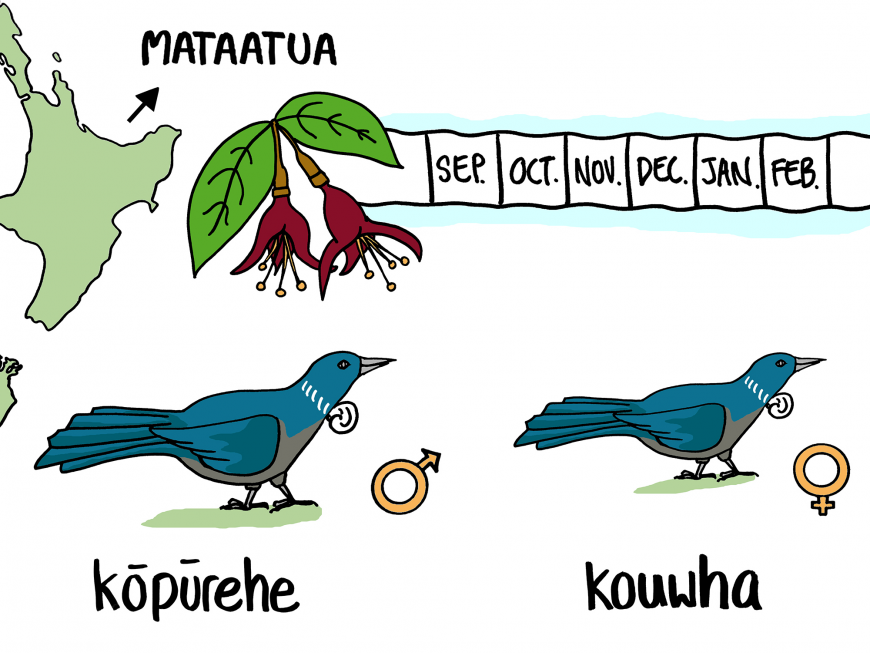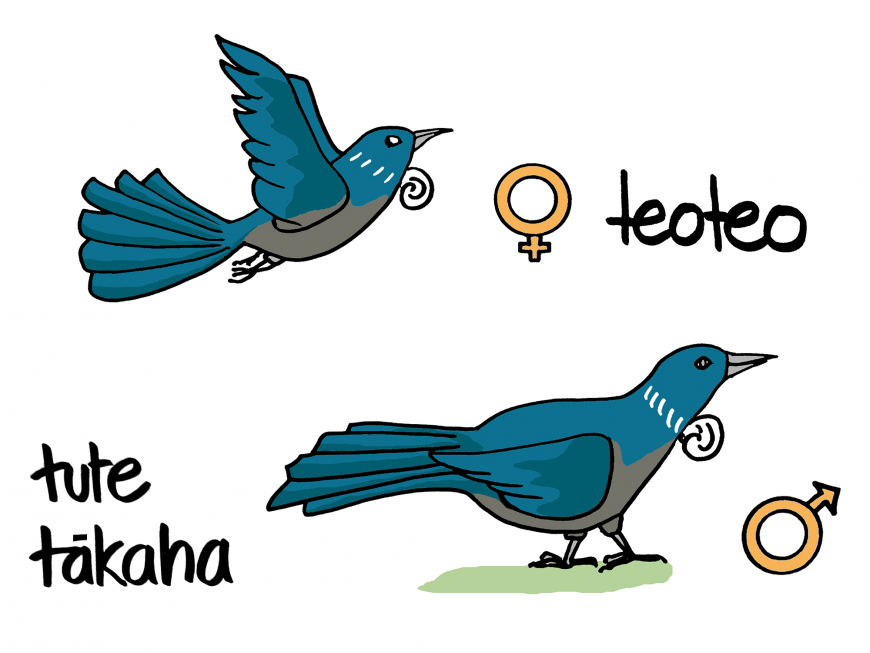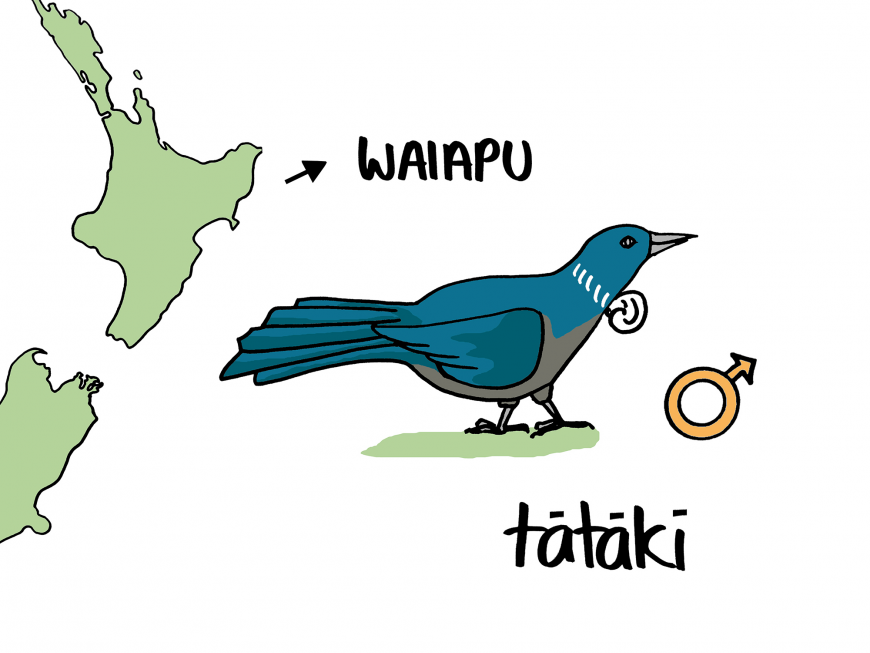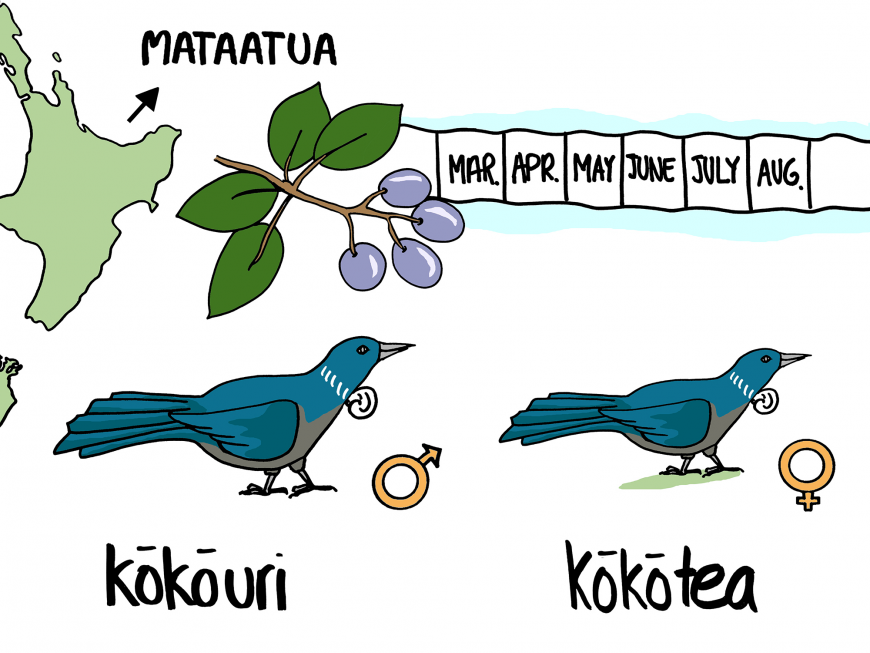Māori names
Back a level
In this section
The name kōkō is one of many names that the tūī has. There are also 13 other Māori names recorded for this bird species: kōkōtaua; kōkōtea; kōkōuri; kōpūrehe; kouwha; kukari; pikari; pitui; tākaha; takahē; tataki; teoteo; tute. These other names reflect differences in the birds based on sex, region and season.
Māori names can reflect the flowering season

Some names are linked to seasonal patterns. In the Mataatua tribal area, male kōkō are called kōpūrehe and females kouwha from the time the kōtukutuku (or native fuchsia, Fuchsia excorticata) flowers until the fruiting of the hīnau (or Elaeocarpus dentatus, a tall forest tree).



